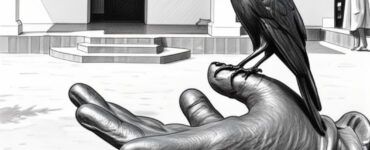Stuck at home, working from home and learning to deal with the times that we are in I got more time to read. When asked to write about my reading, I agreed immediately. I must say that my readings have been sporadic and fragmented as I find it difficult to concentrate for long. There is something else that I enjoy, photography. Being at home in pandemic times, most of my photographs have to do with whatever little bit of the natural world I get to see around me – my plants in the backyard, the plants in the neighbouring patches, the neem tree across the wall whose branches reach out into mine and the wild open space that has hues of green just beyond my window.
Since green was on my mind, mostly, I decided that my first piece needs to be about a book which is so much about the plant world. The book remained in a pile of books that I had planned to read but could not find the time to do so. What first intrigued me about it is the title, How I Became a Tree. It a memoir, a meditative work and a paean to trees as well. Why would one want to become a tree? What interests me as I began to read the book is how Sumana Roy speaks of the desire to slow down, something that has been on my mind now as I deal with life in these times.
Roy writes of how she desires to relish the freedom trees have, they can just be the way they are. Moving through history, religion, philosophy, botany, natural sciences, cinema, folklore and mythology, Roy creates a myriad green tapestry.
I loved the way in which trees coped with dark and lonely places while sunlessness decided curfew hours for me. I liked too how trees thrived on things that were still freely available – water, air and sunlight; and no mortgage in spite of their life long occupation of land.
Now this was something that resonated – the desire for quietness and the solace that I derived from the green, even just a little bit of green in my concrete city life.
Roy brings in the botanist, Jagdish Chandra Bose, not surprising in a book that talks about the life of trees and their world. Bose’s experiments at understanding plants whom he tended as his children, stories of others who had a great affinity for the natural world – the photographer Beth Moon, the novelists D.H. Lawrence, Bibhutibhushan Bandopadhyay and Banophool, the artists Nandalal Bose, Salvador Dali and Frida Kahlo and Rabindranath Tagore are extremely interesting parts of the book. One reads about Bapi Green Taxi that plies on Kolkata streets, of Jadav Payeng, the Forest Man of India too. There are a plethora of tales and stories that speak of the connection between the human and the natural world and Roy refers to many of them. Stories of Daphne and Apollo, Proserpina, of King Vansh Pratap Singh who spoke of the cutting of the smallest part of a tree as the cutting of one’s finger, of violence in the modern world and poetry – all come together as Roy takes us through the world of the green.
As I read I find a kind of disillusionment that Roy has with the mechanical, mundane world around and in trying to deal with all the noise and violence that it involves, she works her way to note the various connections between the natural world and human beings. Living in Summerhill Shimla, on work, many years ago, what struck me most was the wind in the trees. I still hear that at times in the inner recesses of my mind, that sound still engulfs me with calm. This is how Roy describes the sound of the plants in the wind –
One day in March, I was alone in a forest, not completely inside it, but not on the margins either. A kalbaishakhi, a northwester, came without warning. I had spent much of my morning recording the crunchy sound of dried leaves.
Trees, then, she notes are not completely silent creatures – “trees shared a natural sound with people.”
Incidents from her life, small anecdotes, little personal stories, snippets of conversation are deftly woven into the text. These myriad strands reveal the natural world that is around, waiting to be discovered. Roy is also a poet and the book reveals her poetic sensitivity. Small illustrations of trees, branches and leaves are found throughout the text – at the beginning of chapters, at the end of sections of chapters and so on and these add a charm to the text.
As I walk in my small backyard I see smiles around – a new leaf, a bud breaking out, the dry leaf hanging on, a flitting butterfly, the cat toppling a pot. I cannot walk through mountain paths and casuarina groves in these times, but I can see them and hear them as I hold on. I surely wish to be around more trees and am just glad that I got to do that by reading How I Became a Tree.
*









Nicely wriiten Nishi
Also a natural connect between your world and the book
Nice one Nishi. This encourages me to get hold of the book – quite an intriguing feeling, becoming a tree.
Nicely written, Nishi…good read.
Evoked a nice verdant feeling. Got me interested in the book.